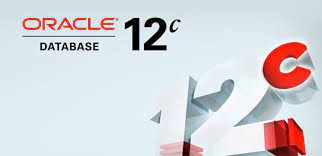ODI (Oracle Data Integrator) 12c is a comprehensive data integration platform provided by Oracle. It offers a wide range of features and components that enable organizations to efficiently integrate, transform, and manage data across various systems and platforms. Here is an overview of the ODI architecture and its key components:
- ODI Studio:
ODI Studio is the graphical user interface (GUI) tool used for developing and managing data integration solutions. It provides a centralized development environment where developers can design mappings, interfaces, packages, and other ODI objects. ODI Studio allows users to visually design data integration workflows and transformations using a drag-and-drop interface. - ODI Repository:
The ODI Repository is a relational database that stores all the metadata related to ODI projects, models, mappings, interfaces, and other objects. It acts as a centralized repository for managing and versioning ODI artifacts. The repository stores information about data sources, targets, transformations, execution plans, and other configuration details. - ODI Agent:
The ODI Agent is a lightweight Java process that executes data integration tasks and workflows. It acts as a communication bridge between ODI components and the execution environment. The ODI Agent can run on different machines and can be configured to execute tasks in parallel, providing scalability and performance optimization. - ODI Topology:
ODI Topology defines the physical and logical connections to various data sources and targets used in data integration processes. It includes definitions for databases, file systems, web services, and other technologies. The Topology ensures that ODI components can access and interact with the necessary data sources and targets. - ODI Models:
ODI Models are representations of data structures in the source and target systems. They define the structure, attributes, and relationships of the data entities involved in data integration processes. ODI Models provide a logical layer that enables developers to work with abstract representations of data, independent of the physical data sources. - ODI Mappings:
ODI Mappings are graphical representations of data transformations. They define the rules and logic for transforming data from source to target structures. ODI Mappings allow developers to visually create and configure data transformations using a rich set of transformation functions and operators. - ODI Interfaces:
ODI Interfaces are executable objects that define the flow of data between source and target systems. They encapsulate the mappings, data filters, join conditions, and other integration logic necessary to move and transform data. ODI Interfaces provide a high-level abstraction for building and executing data integration processes. - ODI Packages:
ODI Packages are containers that group multiple ODI objects, such as interfaces, procedures, and variables, into a single unit. Packages enable developers to organize and orchestrate complex data integration workflows. They allow for conditional execution, looping, error handling, and other control flow mechanisms. - ODI Security:
ODI provides a comprehensive security framework to control access to different ODI components and functionalities. It supports user authentication, authorization, and privileges management. ODI security ensures that only authorized users can access and modify the data integration artifacts.
Overall, the ODI architecture follows a modular and scalable design, allowing organizations to build robust data integration solutions that can handle diverse data sources, complex transformations, and large volumes of data.
SHARE
